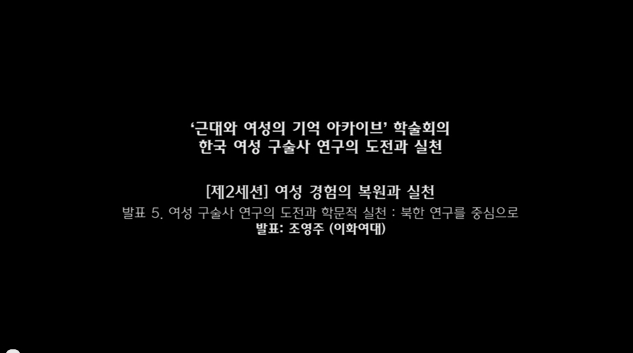근대적 신체의 유형은 동아시아 3국(한, 중, 일) 공히 열강의 자본주의와 물질주의의 유입에 따른 사회적 변화와 밀접하게 연관되어 있다. 이를 반영한 근대적 신체의 행위와 이동성은 당시 ...
http://chineseinput.net/에서 pinyin(병음)방식으로 중국어를 변환할 수 있습니다.
변환된 중국어를 복사하여 사용하시면 됩니다.
- 中文 을 입력하시려면 zhongwen을 입력하시고 space를누르시면됩니다.
- 北京 을 입력하시려면 beijing을 입력하시고 space를 누르시면 됩니다.
1930년대 한국, 중국, 일본 영화에 표상된 근대적 신체의 행위 분류 - 한국영화<미몽>(1936), 중국영화<대로>(1935), 일본영화<태어나긴 했지만>(1932)을 중심으로 = A Classification of Modern Corporeal Mobility as Represented in Korean, Chinese and Japanese Cinema of the 1930s - Focusing on < Sweet Dream >, < Big Load >, and < I was born but... > -
한글로보기https://www.riss.kr/link?id=A109519292
- 저자
- 발행기관
- 학술지명
- 권호사항
-
발행연도
2024
-
작성언어
-
-
주제어
근대적 신체 ; 신체 이동성 ; 신체 표상 ; 아카이브 ; modern body ; corporeal mobility ; ideology ; archive
-
KDC
0
-
자료형태
학술저널
-
수록면
69-103(35쪽)
- 제공처
-
0
상세조회 -
0
다운로드
부가정보
국문 초록 (Abstract)
근대적 신체의 유형은 동아시아 3국(한, 중, 일) 공히 열강의 자본주의와 물질주의의 유입에 따른 사회적 변화와 밀접하게 연관되어 있다. 이를 반영한 근대적 신체의 행위와 이동성은 당시 시각문화를 근본적으로 뒤흔든 영화 카메라 담론과 영화의 이른바 장르 문법 체계 속에서 구체적으로 재현되었다. 본 논문은 영화의 카메라와 영화 장르 문법은 왜 신체 행위에 있어서 다른 무엇보다 명료하게 작동하는 가라는 물음보다 그 안에 포착된 신체 행위가 가져오는 신체 표상을 통해 국가별로 다르게 투영되어있는 의미적 차이와 그 기저에 놓여 있는 문화적 토대를 검토하려는 목적을 갖는다. 결과적으로 이러한 차이가 발생하는 이유 중 하나는 당시 서구 담론의 불가 항력적 유입 사태로 인해 사회 문화적 격변이 초래되었고, 그 파장은 국가적 상황(이데올로기)과 개인적 상황(근대적 신체)을 더욱 정교하게 연결짓게 했다는 것이다. 본 논문은 이러한 가설을 설명하기 위해 1930년대의 한국영화와 중국영화 그리고 일본영화에서 각각 한 작품을 선별해 분석한다. 다만, 본 논문의 한계로는 한국영화의 경우 당시 영화 아카이브의 많은 유실과 상대적으로 적었던 제작편수 등의 이유로 사회문화적 파장이 반영된 영화를 신빙성 있게 선별하여 제시하지 못한다는 점을 들 수 있다. 이는 본 연구 과정에서 얻은 한국 영화영상 자료의 중요성과 아카이브 구축의 필요성을 부각하는 일이라고 할 수 있는바, 또 하나의 영화 사회학적 결론이라고 할 수 있다.
다국어 초록 (Multilingual Abstract)
The modern corporeal type is closely linked to the social changes brought about by the importation of capitalism and materialism by the great powers in the three East Asian countries (Korea, China, and Japan). The mobility of the modern body, which re...
The modern corporeal type is closely linked to the social changes brought about by the importation of capitalism and materialism by the great powers in the three East Asian countries (Korea, China, and Japan). The mobility of the modern body, which reflected this, was concretely reproduced in the discourse of the film camera and the so-called genre grammar of cinema, which fundamentally shook the visual culture of the time. This paper aims not to ask why the film camera and film genre grammar operate more clearly than others in the representation of the body, but rather to examine the semantic differences and underlying cultural foundations that are projected differently across countries through the representations of the body captured within them. Consequently, one of the reasons for these differences is that the indiscriminate arrival of Western discourse at the time led to socio-cultural upheavals, the repercussions of which further elaborated the link between the national situation (ideology) and the individual situation (the modern body). To illustrate this hypothesis, this paper analyses one film each from Chinese, Japanese, and Korean cinema of the 1930s. However, a limitation of this paper is that it is not possible to reliably select and present films that reflect the socio-cultural impact of Korean cinema due to the loss of many film archives and the relatively few films produced at the time. This is another film sociological conclusion that highlights the importance of Korean film footage and the need to build an archive.
동일학술지(권/호) 다른 논문
-
박찬욱 영화에서 아름다움이 처한 곤경에 대하여 - <헤어질 결심>(2022)과 <친절한 금자씨>(2005)를 중심으로
- 심훈학회
- 김윤진 ( Kim Yoon-jin )
- 2024
-
- 심훈학회
- 이수향 ( Lee Su-hyang )
- 2024
-
2010년대 뺑덕 캐릭터 스핀오프 청소년소설에 나타난 「심청전」 뺑덕 캐릭터 스핀오프(Spin-off) 스토리텔링 양상과 교육적 의의
- 심훈학회
- 권도경 ( Kwon Do-kyung )
- 2024
-
한국 현대 소설의 정치적 담론 수용 양상 연구 - 최인훈의 「總督의 소리」를 중심으로
- 심훈학회
- 김종수 ( Kim Jong-soo )
- 2024




 KISS
KISS




